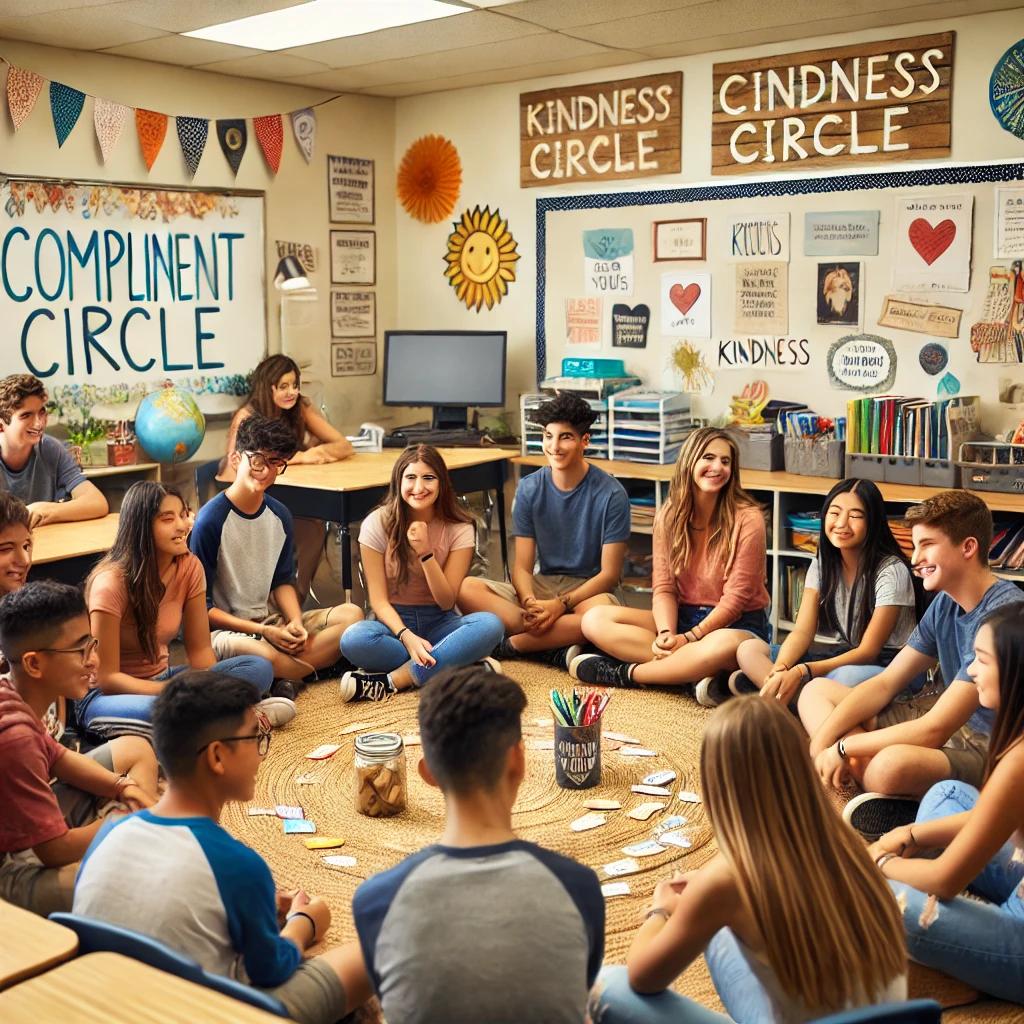How Educators Can Foster Kindness in their classrooms

Small acts of kindness can create a ripple effect, impacting individuals far beyond the initial gesture. Whether it’s a simple smile, a kind word, or a small favor, these actions can lift others’ spirits, reduce stress, and foster a sense of connection. For students, this can enhance emotional resilience and encourage a positive classroom environment. These gestures not only boost morale but also remind people of their shared humanity, encouraging others to pass on kindness and creating a supportive community.
Here are some effective ways for educators to foster kindness in their classrooms:
- Model Kindness: Teachers can serve as role models by consistently using kind words, showing empathy, and demonstrating respectful behavior. This could mean offering words of encouragement, listening attentively, or helping resolve minor conflicts.
- Create a Kindness Ritual: Begin each day with routines like gratitude or compliment circles, allowing students to express appreciation for one another. This promotes a positive tone and encourages students to reflect on others’ good qualities.
- Incorporate Kindness Activities: Plan regular activities or “kindness challenges,” where students complete small acts of kindness, such as sharing supplies, helping a peer, or making thank-you cards for school staff.
- Teach Social-Emotional Skills: Educators can help students learn empathy, active listening, and emotional regulation through direct lessons or short daily practices. This equips them with tools for understanding and respecting others’ feelings.
- Celebrate Acts of Kindness: Recognize and celebrate acts of kindness by highlighting them publicly. Create a “Kindness Wall” or announce acts of kindness in class, which reinforces the value of positive behavior and motivates others to follow.
- Role-Playing Scenarios: Use role-playing activities to allow students to practice handling conflicts and showing kindness in different scenarios. This experiential learning builds confidence in applying kindness in real situations.
- Community Service Projects: Organize classroom-based or school-wide projects where students can give back, such as visiting a local nursing home or organizing a food drive. Service activities promote empathy, responsibility, and awareness of others’ needs.
This blog explores how kindness impacts the classroom by fostering empathy, respect, and emotional well-being among students. Through simple acts, like gratitude circles, teamwork exercises, and community service, educators can create a supportive environment where students feel valued and connected. Kindness not only enhances classroom culture but also encourages positive behavior and resilience. Practical tips, real-life examples, and actionable resources help educators integrate kindness into their daily interactions, reinforcing a foundation for mutual respect and personal growth.


